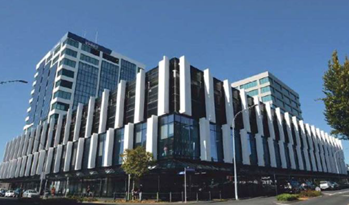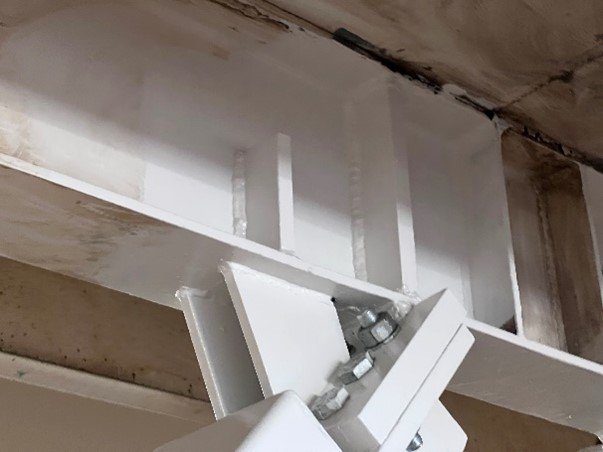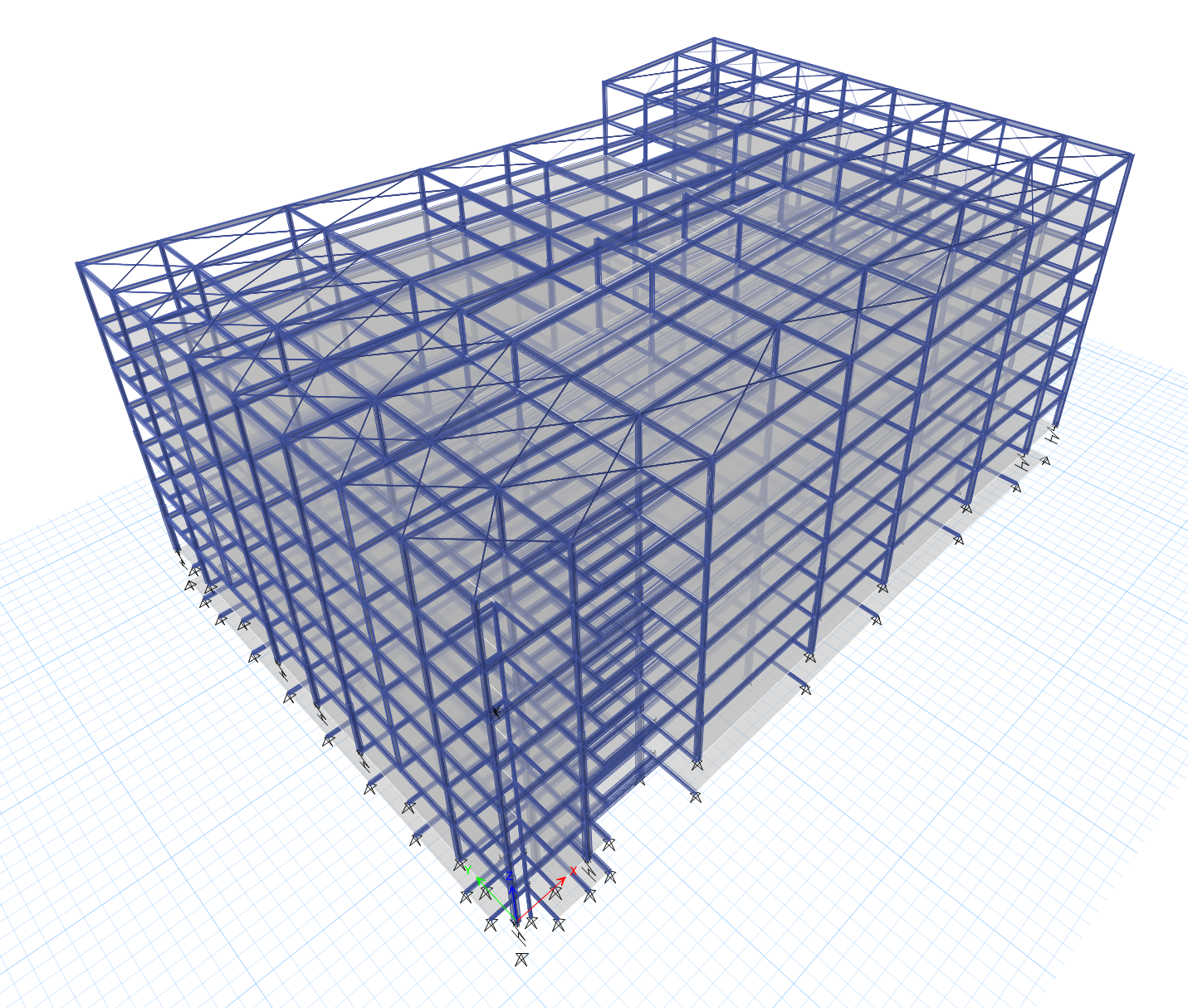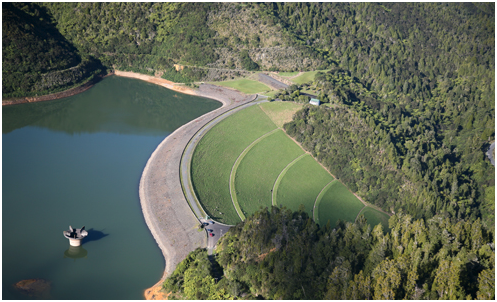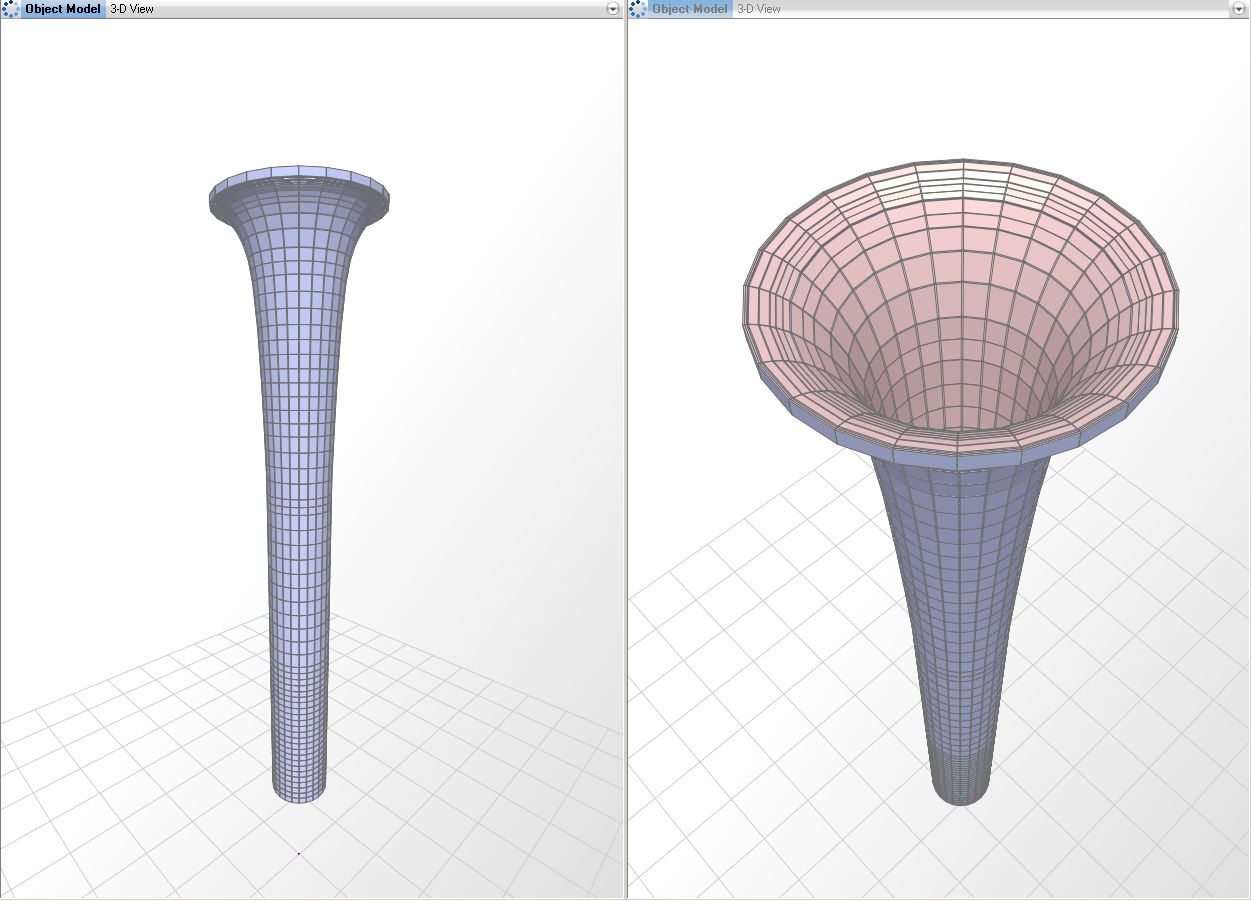Projects
Seismic Analysis, Earthquake Damage Assessment & Retrofit Solutions
Hollow-core Flooring “Strongback” Design
In 2022, a new retrofit solution for deficient hollow-core flooring known as “Strongbacks” was developed, experimentally vaildated and had design guidance published.
Compusoft Engineering have since completed the design and documentation of strongbacks to improve the performance of hollow-core flooring units that both exhibit exisitng non-seismic related damage and are inadequate for the seismic demand. The performance of the strongback strengthened hollow-core units was improved to be greater than 100% New Building Standard (NBS).
85-101 Alexandria St, Hamilton, New Zealand
Compusoft Engineering were engaged to undertake detailed seismic assessment of the buildings located at 85-101 Alexandra Street, Hamilton. The complex comprises four seismically separated reinforced concrete moment resisting frame structures – two 4-storey podiums and two 11-12-storey towers. The total floor area of the complex is 50,000 m2. Notable features of the buildings are precast hollow-core flooring and non-ductile floor mesh. Non-linear response history analyses were conducted to determine the performance of the building.
Downtown Carpark, Auckland, New Zealand
Compusoft Engineering were engaged to undertake detailed seismic assessment of the Downtown Carpark structure located in central Auckland. Designed and constructed in the late 1960’s from innovative precast concrete, the seven-story carpark had two additional lightweight steel floors added circa 2004. An assessment by others (and using simplified assessment techniques) identified seismic deficiencies in the structure. The difference in response between the original concrete wall building and the braced steel upper floors complicated the assessment process. A non-linear response history analysis was used to determine seismic demands. This advanced approach allowed the seismic behaviour to be better assessed and reduced the number of elements requiring remediation.
A retrofit strengthening solution has been designed to strengthen the structure to 67% NBS, and included strengthening work to the diaphragms, connections to walls, and EBF bracing. Strengthening has been staged with the first stage completed in early 2022.
Fanshawe St Carpark, Auckland, New Zealand
Compusoft Engineering were engaged to undertake detailed seismic assessment of Fanshawe St carpark located in central Auckland. Constructed in 1988 the four-story carpark was designed to be connected to a 3-story retaining wall located on its southern boundary. Lateral resistance was provided by a retaining wall with pinned precast concrete framing contributing nothing to seismic strength.
Seismic response of the structure is governed by the strength and stiffness of the retaining wall. As such significant soil structure interaction needed to be considered in the assessment. This required significant geotechnical input, the consideration of which necessitated non-linear analysis to incorporate.
5-Storey Cinema & Carpark Building, Wellington, New Zealand
A suite of performance-based nonlinear time history analyses were utilised to validate the reinstatement of a building that suffered earthquake damage by reusing the existing foundation system. Application of the performance-based approach included amalgamation of international best practice with NZ standards and modelling of and performance criteria adopted for piles and critical superstructure elements.
The adopted analysis approach allowed for explicit validation of the stress and strain response in key elements of the lateral load resisting system, including EBF active links and foundation piles. Assessment of the plastic deformations in the EBF active links and individual pile response allowed for an efficient overall design relative to that achieved through conventional design approaches. Uncertainties in foundation response and superstructure properties was incorporated also into the analysis.
Asteron Centre, Wellington, New Zealand
Compusoft Engineering were engaged to undertake detailed seismic assessment of the Asteron Centre building in downtown Wellington. The building was completed in 2010 and comprises 48,000 m2 of retail, carparking and office space over 16 storeys. The structural system comprises a novel hybrid concrete wall-steel coupling beam core with perimeter moment-resisting frames. The floors of the building were constructed using precast hollow-core units.
Non-linear response history analyses were conducted to determine the performance of the building.
Nonlinear-static analyses were undertaken to assess the performance of the diaphragms.
Harrington St Transport Hub, Tauranga, New Zealand
Analysis and strengthening of a seven-storey carpark building with basement levels utilising novel energy-dissipating bracing. Performance verification of the building response and of the novel bracing elements was completed through a series of nonlinear time history analyses which constituted the incorporation of international best practice within the NZ design framework.
Compusoft’s scope of work included modelling of the nonlinear response of the nonlinear bracing elements, global modelling and analysis of the building, and verification of component performance. Performance criteria of particular interest included the novel bracing, foundation elements, floor diaphragms, and the treatment of the carpark ramps.
Hopetoun Alpha, Auckland, New Zealand
Compusoft Engineering were engaged to undertake detailed seismic assessment of the historic Hopetoun Alpha Church. Built in 1876 from unreinforced concrete the building fell outside of conventional assessment guidelines. An assessment approach had to be developed that would take the buildings geometry and material performance into consideration. Using best practice and engineering fundamentals aspects of the building found to perform to a level greater than the building age and construction would suggest.
CTV Building, Forensic Seismic Analysis, Christchurch, New Zealand
The Canterbury Television (CTV) Building collapsed during the Lyttelton Earthquake in February 2011 tragically taking the lives of 115 people.
Compusoft Engineering was responsible for the inelastic time history analyses used as part of the forensic investigation into the collapse. Results were used to determine trends in building behaviour, the likely failure hierarchy, and to investigate the effects of cumulative damage resulting from sequential earthquakes.
Best practice and the latest research was used to determine the likely performance of the structural elements. This combined with state of the art modelling techniques produced results that were consistent with collapse hypotheses and physical evidence. Non-linear behaviour incorporated into the analysis included, frame hinging, wall yielding, rocking, diaphragm disconnection, floor yielding (in and out of plane), beam column joint behaviour, and masonry strength and stiffness degradation.
Lake Tekapo Gate 16 Seismic Analsyis, Lake Tekapo, New Zealand
Compusoft Engineering was engaged by Genesis Energy to undertake seismic assessment work related to a number of assets that are part of the Tekapo A hydroelectric scheme.
As part of the overall engagement Compusoft Engineering was tasked with undertaking an independent review of a seismic assessment of Gate 16, which is a control gate forming part of the Tekapo A scheme.
The concluding report detailed the independent analysis and assessment undertaken to verify the expected earthquake performance of the Gate 16 structure during both the serviceability limit earthquake (SLE) and maximum design earthquake (MDE).
A three dimensional finite element analysis model was formed in the software package SAP2000.
Apartment Building Seismic Strengthening Retrofit, Auckland, New Zealand
Compusoft Engineering was engaged to design seismic strengthening to an 'L-shaped' apartment tower with a building footprint of 42m x 36m and height above ground of 36m, located in central Auckland. The client brief has specified that the retrofit works should ensure that the building can attain a percent new building standard (%NBS) score not less than 67 as defined by NZSEE.
A seismic analysis of the building was undertaken using the finite element package ETABS via the nonlinear time history analysis procedure in accordance with the requirements of the New Zealand Loadings Standard,.
The strengthening works included; strengthening to the Level 1 & 2 diaphragms, wall alterations to ensure diaphragm actions are not exceeded and foundation strengthening including additional piles and ground beams.
Mangatangi Dam Spillway Shaft Seismic Assessment, Kaiaua, Franklin, New Zealand
Compusoft Engineering was engaged by Damwatch Services Ltd. (DSL) to undertake a detailed seismic assessment of the Mangatangi Dam spillway shaft. The assessment was a continuation of a previous study that had shown that the spillway shaft was likely to exhibit inelastic behaviour when subjected to ground motions corresponding to return periods of 2,500 years and 10,000 years for the site.
The primary foci of the analysis was to:
Develop a better understanding of the likely inelastic demands during seismic events to allow a more rigorous assessment of the reinforcing details identified as potentially deficient in the previous study and,
Provide estimates of (horizontal) crack widths likely to be present during and following each of the seismic events to allow determination of whether cracking is likely to induce significant leakage. This was achieved by the use of inelastic time history analyses utilising the advanced finite element analysis package SAP2000 for the spillway shaft.
Hotel Earthquake Damage Assessment, Christchurch, New Zealand
The hotel suffered minor to moderate damage during the Canterbury earthquake sequence ongoing since 2010.
Compusoft Engineering was engaged to determine, through the use of specialist software and inelastic time history analysis, that the hotel building could achieve New Zealand Standard accepted seismic performance post-earthquake.



